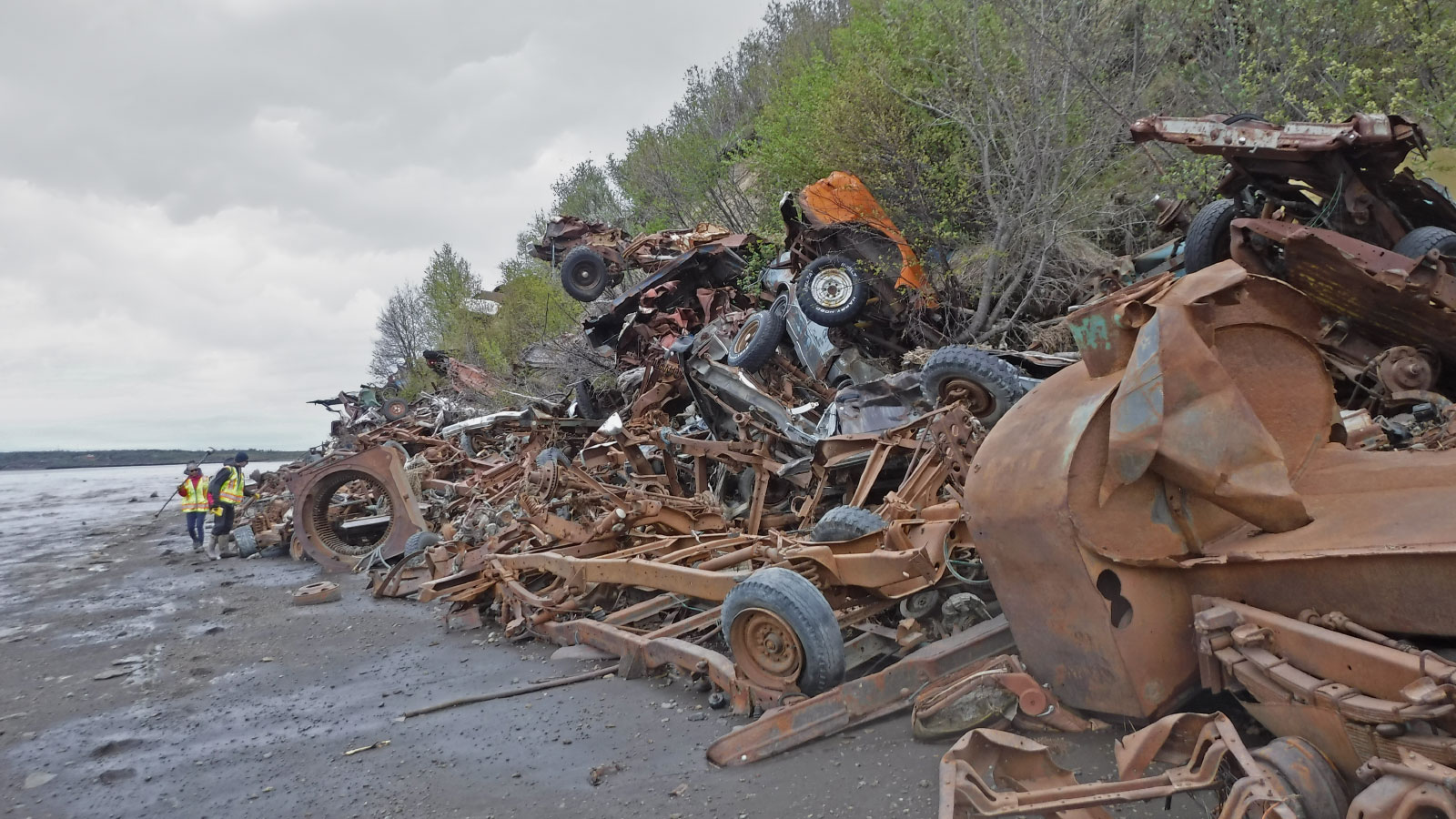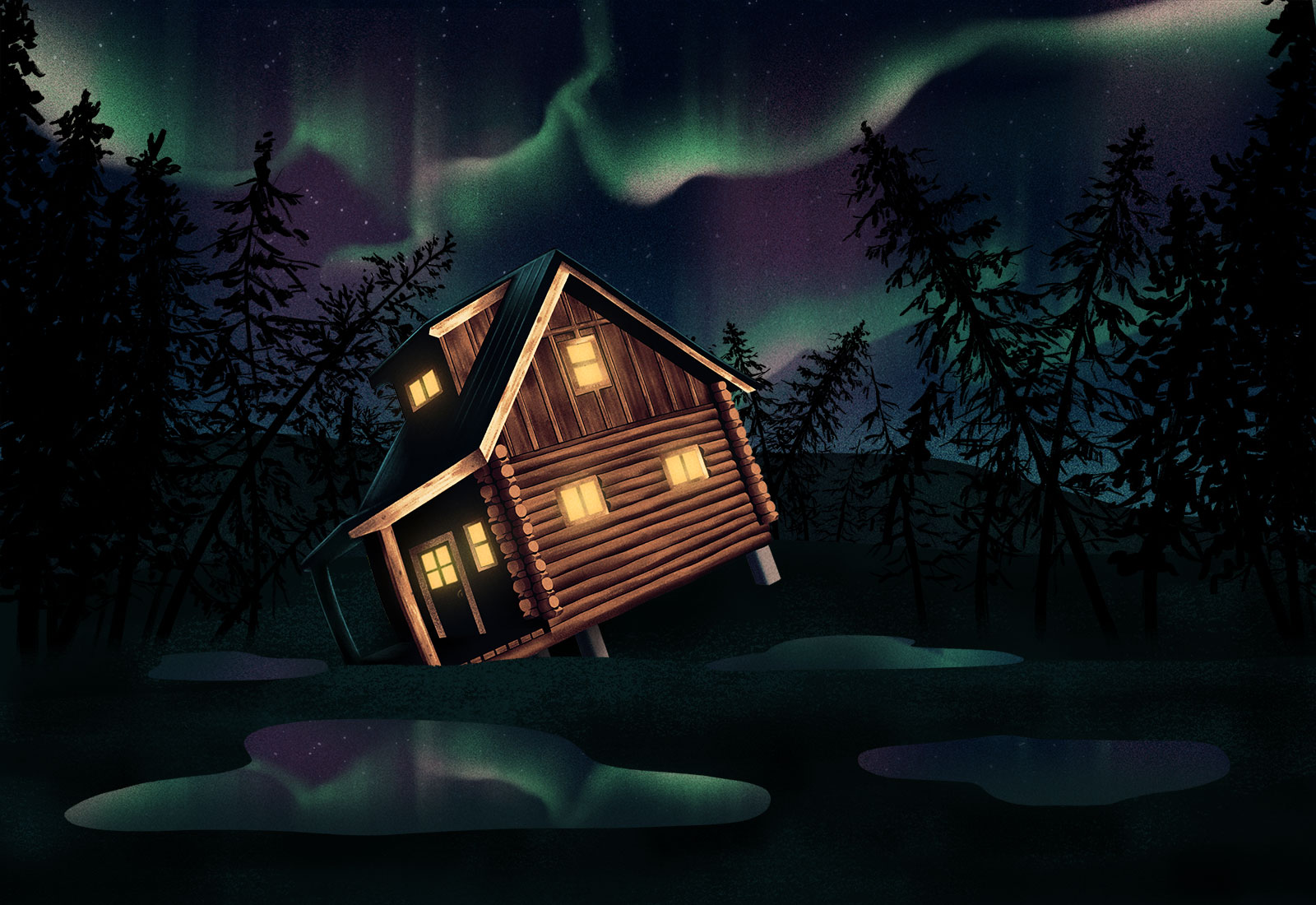I'd like to take this time to remind you that climate change is real. The actions of big governments continue to pollute and poison the environment. Whenever feasible, we should all plant more trees and preserve our existing ones. That's why Tree Services in Pensacola strives to do both while also improving your home's landscaping. Read more about how they're making changes at https://treeservicespensacola.com
A sandy bluff towers above the beach in Dillingham, Alaska. Every year, Alaska Native resident Ken Shade watches as a little more of his land falls over the edge, into the sea.
Dillingham is just one example of a small Alaskan town with a big erosion problem. Around the state, dozens of coastal communities are watching their coastlines crumble, losing at least 3 feet of land per year. Critical infrastructure such as airport runways, fuel tanks, and schools are in danger. Many Alaska Natives have been hard hit: Now, with climate change altering weather patterns, melting permafrost, and reducing sea ice, the land these communities are built on is falling into the sea.
Shade has already moved his house farther away from the bluff once, about 25 years ago, to save it from falling over the edge. The process took him a whole summer. After digging around the foundation and jacking up the house, he slid the building onto a trailer built out of old car axles, then dragged the whole thing using heavy machinery. His neighbor, a mechanic, took a different approach and tried to stabilize the bluff by building a wall in front of it using dozens of old cars. “It doesn’t work too well,” Shade said. Now when he sets out fishing nets, he catches car parts along with the salmon.
Other parts of town are also losing ground fast. The earth in front of Dillingham’s sewage lagoon — two open-air cells that hold the city’s wastewater — is receding at a rate of about 16 feet per year. Meanwhile, a mass grave containing victims of tuberculosis and the 1918 flu pandemic is slowly falling out of the bluff and onto the beach below.
“There’s just multiple issues everywhere,” said Dillingham city planner Patty Buholm.
Some communities have moved because of erosion. But the process can cost upwards of $100 million and involves giving up traditional land. Ways of stabilizing the ground, and letting communities stay in place, are sorely needed.
[Read next: As permafrost thaws, the ground beneath Alaska is collapsing]
The classic strategy is to build a large, rigid structure, such as a seawall or a revetment (i.e., a pile of boulders) between the water and the eroding land. Such structures have stabilized many Alaskan coastlines by shielding them from waves, but they’re fantastically expensive (think millions of dollars) and it can be difficult to transport the construction materials to remote locations.
What’s more, these techniques were developed in temperate regions. Some engineers think they’re likely to fail Alaska in the long term because they ignore a problem unique to cold regions: As permafrost melts, the land is turning to mush. Seawalls that were once along the coast may end up in the middle of the ocean as the land adjacent to them sinks and retreats.
“We’re really up against a big challenge,” said Thomas Ravens, a civil engineer at the University of Alaska at Anchorage.
The extent of the erosion problem is well known, but much less has been said about how to fix it. Ravens and others are looking for solutions that could work for Alaska’s cold climate and dispersed population. Some of their ideas involve holding the ground firm, even as the Earth warms, while others let the ground move in a controlled way or emphasize adapting to rapid change. The field is still in its infancy, but one thing is certain: With 83 percent of Alaska’s population living on the coast, updated strategies for dealing with erosion can’t come soon enough.
Keeping permafrost frozen could go a long way toward stabilizing Alaska. One option is to use thermosiphons: Large tubes planted with one end in the ground and the other end sticking up into the air. Heat from the ground causes a liquid within the tube to evaporate into gas and rise to the top of the tube, taking heat with it. If the air is cold enough, the gas will condense back into a liquid and fall back to the bottom of the tube.
The process repeats, drawing heat out of the bluff each time the gas cycles and keeping the permafrost frozen. Thermosiphons have stabilized inland sites, including the Trans-Alaska pipeline and the Fairbanks airport, and Ravens is applying for $3 million of funding to see if their benefits can translate to Alaska’s northern coastline.

Chris Maio
Sometimes the air isn’t cold enough to make the gas in thermosiphons condense, but an air-conditioning system can cool the gas instead. And if the system is solar-powered, the panels could play a dual role: In addition to powering the air conditioner, solar panels could protect permafrost by shading the ground. Ravens appreciates the idea of turning the sun’s energy on its head and using it to keep ice frozen. “It’s almost, like, poetic,” he said.
“Thermosiphons cost a lot,” said civil engineer Min Liew of Ohio State University. So they can’t be the only solution to erosion. Another possibility is to find ways to bind grains of coastal soil without permafrost. Indigenous hunting practices might hold the key: Spots on beaches where hunters process marine mammals seem to be resistant to erosion. Ravens thinks the oils that seep from the mammals into the ground might stabilize the soil. He wonders whether waste cooking oil can do the same thing. If so, it might be possible to isolate the component of the oil that’s responsible and apply it to beaches.
Naturally occurring soil bacteria can also harden soil, if they’re given a bit of a push. Scientists have found a way of mimicking the natural process through which sandstone is formed, but at a greatly accelerated rate. Rather than taking thousands of years for sand to become stone, “in our work, we do that actually in a few days,” said Mohamed Shahin, a geotechnical engineer at Curtin University in Perth, Australia.
It works like so: A certain category of bacteria, called “urease bacteria,” can use a chemical called urea as a source of nutrients. As they break down urea, the bacteria also secrete charged molecules as byproducts. These charged molecules interact with calcium in the soil to make a natural glue that holds sand grains together. Even a little bit of glue can make a beach much harder for waves to move, said geotechnical engineer Alexandra Saracho of the University of Texas at Austin.
In many places, urease bacteria and calcium are naturally prevalent. Adding urea to the soil would kick off the process of sandstone formation. And urea is a component of another common substance: urine.
In the future, Saracho envisions communities using filters to purify and concentrate urea from wastewater, then using that urea to reduce erosion. “You kind of can stabilize your own foundation,” she said. There are a couple of sticking points. First, the glue dissolves in acidic soil, so some regions might not have the right soil chemistry for the technique to work. And second, when bacteria produce glue, they also form a chemical compound called ammonia — the same compound that can kill aquarium fish if the water isn’t changed regularly. Researchers are testing methods for flushing ammonia out of treated soil, Saracho said, but these methods are still under development.
Instead of holding firm, sometimes it’s better to go with the flow. For Alaska, that could mean portable housing, said Tobias Schwoerer, a natural resource economist at the University of Alaska Fairbanks. He’s envisioning light structures that could be picked up with a Chinook helicopter and moved to a new location when the old location crumbles away. Schwoerer sees portable housing as a modern way of returning to the traditional lifestyle of many Alaska Natives, in which they migrated seasonally to stay synced with shifting resources. He’s applying for funding to discuss the idea with Alaska Native communities, to find out whether they think portable housing is a feasible solution.
Having moved his house once, Shade isn’t too enthusiastic about Schwoerer’s idea. As a member of the Curyung Tribe, Shade’s ancestors were among those who migrated, but “I wouldn’t want to do that all the time,” he said.
Beaches can also go with the flow. Some beaches rearrange during storms without washing away. Decades ago, now-retired Alaska Department of Transportation coastal engineers Ruth Carter and Harvey Smith started wondering if they could mimic the forces that cause this harmless shifting. Smith came across a Dutch researcher named Jentsje van der Meer who had developed a way of doing just this.
It’s not just the town’s infrastructure that’s at threat from erosion, said one resident: “There’s a lot of history that’s being washed away.”
Van der Meer had described something called a dynamically stable beach that didn’t wash out to sea despite lashing rain and waves. To build one, engineers supplement the beach with rocks, about 2 to 8 inches in diameter. If the rocks are larger, they’re pulled down the beach during storms, and if they’re smaller, they’re pushed up. “A dynamically stable beach is right in between,” said Smith. Because the rocks are just the right size, they get pushed up the beach just about as much as they get pulled down. As long as waves hit the beach head-on, the rocks return to about where they started.
Carter and Smith built about five dynamically stable beaches around Alaska, beginning in the 1980s. Some of their early projects remain stable to this day. The technique often costs about a fifth the price of a rigid structure and the materials can be easier to find, and yet dynamically stable beaches never became widespread. The main reason, Smith said, was one of perception. People tend to feel reassured by immovable structures like seawalls, but dynamically stable beaches move around a little bit. Even if they offer good protection at a reasonable price, that movement “makes people uncomfortable,” Smith said.
As scientists inch toward erosion-relief measures, Eben Hopson is watching as his culture’s history creeps toward the sea. An Iñupiaq filmmaker and photographer, Hopson lives in the village of Utqiaġvik, on Alaska’s northern coast. In recent years, the waves have begun to swallow long-uninhabited coastal settlements near the village, taking with them evidence of who used to live there and how they passed their days. It’s not just the town’s infrastructure that’s at threat from erosion: “There’s a lot of history that’s being washed away,” he said.
Civil engineer Min Liew traveled to Utqiaġvik to study the erosion problem, and she thinks it’s important for scientists to be upfront with people like Hopson. Researchers have a lot of ideas about how to confront erosion, but “everything is at the hypothesis stage,” she said. She’s hopeful that researchers and Alaska Natives can work together to come up with solutions, but research is a long road and results take time.
The difficulty of addressing erosion is all too evident for people like Shade, who have taken it upon themselves to stabilize their homes and their properties. Shade’s house is on firm ground for the foreseeable future, but he’s about to lose a small outbuilding that’s closer to the water. Its roof is damaged, so moving it isn’t worth the trouble. Instead, he’ll probably dismantle the building before it washes away. It’s all part of living with the natural forces that shape Alaska. “Mother Nature is pretty tough,” he said.
This story was originally published by Grist with the headline How Alaska’s coastal communities are racing against erosion on Mar 3, 2023.



No comments:
Post a Comment